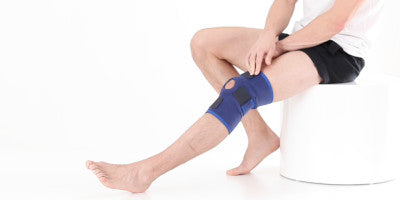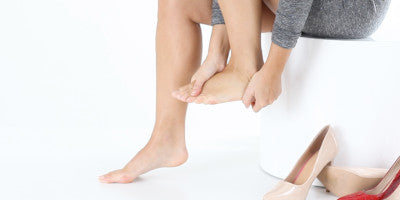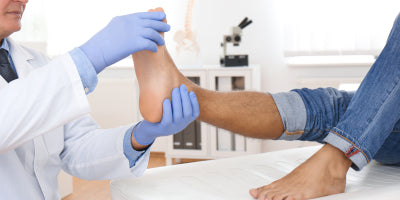What is Opti-Heal Advanced Woundcare?

As more and more of us are taking on increased responsibility for our own and our family’s wound treatment, at Neo G, we believe that self-care should not mean less care. How we care for our wounds can affect how well they heal and whether they are at risk of infection. While the risks associated with smaller cuts and abrasions may be minimal, larger, more serious wounds require a great deal of care and attention and it is therefore vital to follow best practices.
To that end, we developed Opti-Heal Advanced Woundcare, hospital grade dressings for use at home. Whether you are leaving A&E, an outpatient following surgery or simply treating a wound entirely from home, you can give you or your family members the care their wounds deserve and need. With wounds being a bigger cost to the NHS than obesity and smoking*, for the first time in the UK, clinically proven, medical grade advanced wound care from Neo G is available from retail.
Why Choose Opti-Heal?
When you have a wound, great or small, you just want to go back to normal. Opti-Heal wound dressings give you better healing outcomes, faster. This shortens your potential time in pain and gets you back to doing the things you love.
Time with a wound can be extremely stressful with trips to the hospital for dressing changes daunting. The threat of infections and bugs can be avoided with the hospital at home experience offered by Opti-Heal. The promise of professional wound care can be had at home after being picked up at retail, without a prescription, 24/7.
It’s one thing for your wound to heal but did you know some wounds heal better than others? As you move along the healing journey, your mind may move to the aesthetics of your healed wound. Opti-Heal dressings employ advanced wound care which means your wounds heal better and therefore leave behind a reduced scar than they may have done otherwise.
What is the difference between a plaster and an Opti-Heal dressing?
You’d be forgiven for thinking that ‘dressing’ is another word for ‘plaster’. This is not the case. Plasters, even those offered by the leading brand, offer wound coverage. Wound coverage is exactly what it sounds like, a covering for the wound, helping to prevent infection. This is but one element you require for total wound healing. Opti-Heal dressing not only offer coverage but also wound progression. Wound progression is what occurs when a wound is kept in the optimal healing environments.
You may be surprised to learn that wounds heal best in appropriately moist environments (and you can dispel more wound care myths here!). Moist wounds heal 2-3 times faster than dry wounds. Cell growth thrives on moist conditions and in order for your wound to form new skin tissue, new cells need to form. The principle aim of moist wound therapy is to create and maintain those optimal moist conditions for your skin to renew itself. Follow these simple steps to protect your wound and help it heal. Common plasters are not conducive to ideal wound healing environments.
Finally, a wound that has poorly and dryly healed under a plaster must be subjected to the harsh removal of said plaster. Plasters can reopen wounds upon their removal and increase the likelihood of eventual scarification.
How does a wound dressing work?
We know wounds need to be moist to heal optimally but what constitutes Opti-Heal faster healing technology? Ultimately, it can be broken down into three key principles:
1. Liquid Management
Exudate levels need to be controlled in the wound environment. Too much exudate will leak causing further problems including maceration and enlargement of the wound area. Too little and the wound bed may become dehydrated. Our Opti-Heal dressings are designed to conform closely to the wound bed, controlling exudate levels to optimize healing of wounds.
2. Wound Monitoring
It is important to monitor the wound as it heals to ensure that there is no infection or degradation of the wound. Frequent removal may delay the healing process and increases risk of infection. Our Opti-Heal dressing are either translucent or repositionable, allowing for monitoring without fully replacing the dressing.
3. Kind Removal
All products in the Opti-Heal range consider the gentle treatment of healing skin a top priority. Where silicone adhesive and a silicone wound contact layers are utilized, removal is less painful and the dressing stick to skin, not the wound. Our soft silicone dressings are allergy free and are designed to be comfortable, protecting the skin around the wound and reduce pain and trauma during dressing changes.
How absorbent should my dressing be?
Most people would automatically assume that the highest level of absorbency (or what we call drainage level) would be best, no matter what. However, we’ve also established that moist wounds heal best, so which is it? In truth, a ‘goldilocks’ zone should be found for each wound as no two wounds are the same.
It is key to understand that wounds don’t just bleed, they exudate. Exudate can include blood but also plasma and other liquid. So, it’s important to get the right absorbency, or drainage level, for the right level of exudate your wound might have. For instance, a high drainage level against a moderately exudation wound can actually dry out your wound, which, as mentioned above is not the ideal healing environment. Dry wounds can scab and scabs do not result in proper healing. They take longer to heal and are more likely to scar.
Likewise, a heavily exudation wound being treated with a dressing with a light drainage level will result in a ‘drowned’ wound in which proper healing cannot occur. Therefore, the right drainage level for the right wound is paramount to advanced wound care.
Understanding the healing process
1. Haemostasis Phase

Haemostasis is the process of the wound being closed by clotting. This stage happens very quickly as, within seconds, your blood vessels constrict to restrict the blood flow and platelets of red blood cells stick together in order to seal the break in the wall of the blood vessel. Within about a minute, coagulation occurs and reinforces the platelet plug with threads of fibrin (molecular binding agent).
2. Inflammatory Phase

Beginning right after the injury, blood vessels leak transudate (water, salt and protein) which causes localised swelling. Inflammation controls both the bleeding and the prevention of infection and it allows for healing and repair cells to move to the site of the wound while damaged cells, pathogens and bacteria are removed from the wound area. The inflammatory phase often lasts four to six days.
3. Proliferative Phase

Consisting of three distinct stages, the proliferative phase often lasts anywhere from four to 24 days. Initially, the wound bed is filled with deep red granulation and connective tissue and new blood vessels are formed. Following this stage, the wound margins contract and pull toward the centre of the wound. The final stage of the proliferative stage is to cover the wound. Here, epithelial cells arise from the wound bed or margins and begin to migrate across the wound bed in leapfrog fashion until the wound is covered.
4. Maturation Phase

Finally, the maturation phase is when collagen is remodelled from type III to type I and the wound fully closes. Collagen is aligned along tension lines and water is reabsorbed so the collagen fibres can lie closer together and cross-link. Cross-linking of collagen reduces scar thickness and also makes the skin area of the wound stronger. Generally, remodelling begins about 21 days after an injury and can continue for a year or more. Even with cross-linking, healed wound areas continue to be weaker than uninjured skin, generally only having 80% of the tensile strength of unwounded skin.
With this we hope we have introduced you to Opti-Heal Advanced Woundcare and to better healing solutions and outcomes. Welcome to the future of wound care for you and your family with hospital grade dressings for use at home.
*Cost of wounds to the NHS: https://bmjopen.bmj.com/content/10/12/e045253
*Cost of smoking to the NHS: https://www.england.nhs.uk/long-read/guide-for-nhs-trust-tobacco-dependence-teams-and-nhs-trust-pharmacy-teams/
*Cost of obesity to the NHS: https://healthmedia.blog.gov.uk/2023/06/07/government-plans-to-tackle-obesity-in-england/















